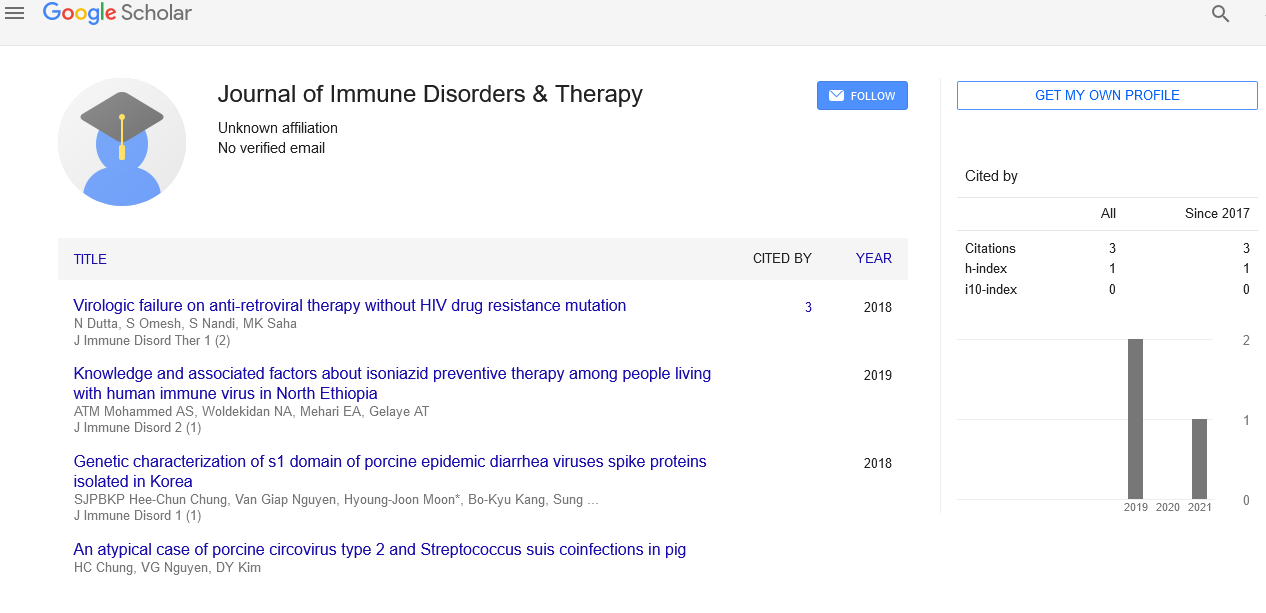Editorial note on immunological memory
Received: 05-Aug-2021 Accepted Date: Aug 15, 2021; Published: 25-Aug-2021
This open-access article is distributed under the terms of the Creative Commons Attribution Non-Commercial License (CC BY-NC) (http://creativecommons.org/licenses/by-nc/4.0/), which permits reuse, distribution and reproduction of the article, provided that the original work is properly cited and the reuse is restricted to noncommercial purposes. For commercial reuse, contact reprints@pulsus.com
Introduction
Immunological memory alludes to a gathering of antigen-explicit cells whose improved recurrence takes into consideration speedy viral reinfection the executives. The memory pool’s antecedents are IL-7R-communicating effector T cells. This populace of cells, which represents about 5–10% of the effector pool, specially endures the compression stage and advances into a steady memory populace. 24 These memory cells can be immediately set off after reinfection and, because of their more prominent recurrence, intercede quicker popular microorganism leeway. Moreover, progressive diseases with a similar infection, or prime-support immunization regimens, animate memory cells more than once. Immunological memory alludes to the resistant framework’s capacity to perceive an antigen that the body has recently met and mount an immunological reaction in response to it. Optional, tertiary, and other resulting resistant reactions to a similar antigen are the most well-known. Higher vertebrates have a humoral immunologic memory. The focal job of B and T cells in versatile invulnerability in higher vertebrates up to human species, immunologic memory is inseparably connected to their capacity. Brief plasma cells (PCs) are the main key part that gives non-deep rooted antigen-explicit security for quite a while, as they can make high-partiality microbe explicit antibodies in the reticuloendothelial framework and mucosal surfaces, forestalling reinvasion for a long time. Higher vertebrates have a humoral immunologic memory. The focal job of B and T cells in versatile invulnerability in higher vertebrates up to human species, immunologic memory is inseparably connected to their capacity. Brief plasma cells (PCs) are the main key part that gives non-deep rooted antigen-explicit security for quite a while, as they can make high-partiality microbe explicit antibodies in the reticuloendothelial framework and mucosal surfaces, forestalling reinvasion for a long time. Their antibodies orchestrate inborn and versatile resistance, working on brief balance and fast opsonization against occasional viral disease, diminishing microbe load throughout the cold weather months. Genuine retention, then again, can be credited to extensive PCs in the bone marrow (which produce less contrasted with short live PC). These long-live PCs produce the consistent state level of immunoglobulin in a solid individual and accept their drawn out endurance signal from stromal cells that emit IL-6. Enduring memory cells, which can be seen in both humoral and cell-intervened memory, add to the complexity of versatile insusceptibility. B and T memory cells structure inside auxiliary lymphoid tissues when guileless T and B cells are actuated without precedent for the primary reaction. On the off chance that these memory cells endure the ensuing disease, their stochastic recurrence is 10– 100 times that of the guileless compartment with a similar T cell or B cell receptors. Versatile insusceptibility is portrayed by immunological memory. Vaccinology’s motivation is to make dependable immunological memory that secures against reinfection (Chapter 90).
Memory can be incredibly seemingly perpetual after contamination with certain infections, potentially all through the remainder of the host’s life (e.g., yellow fever and smallpox viruses).The perseverance of explicit lymphocytes and immunizer delivering plasma cells, as opposed to the capacity of antigen to cause consistent lymphocyte initiation, is utilized to characterize memory. Extensive plasma cells in the bone marrow give a consistent lowlevel wellspring of serum immunizer for humoral memory to infections. A populace of homeostatically kept up with memory B cells might be needed to keep up with consistent quantities of enduring plasma cells after some time to keep up with humoral insusceptibility. Low-level homeostatic division directed by the cytokines IL-7 and IL-15 controls the pool of memory T cells. Memory CD8+ T cells generally require IL-7 for endurance, however IL-15 is needed for low-level expansion to keep up with the memory T-cell pool’s size. Immunologic memory supports the improvement of inoculations against microorganisms that have generally caused plagues that have adjusted social and monetary history, like smallpox, polio, diphtheria, and measles. Antibody advancement has brought about the destruction of a few irresistible ailments, including smallpox. Antibodies against tuberculosis, jungle fever, diarrhea, AIDS, and Ebola are among the different irresistible illnesses being investigated.
Acknowledgment
The authors are grateful to the journal editor and the anonymous reviewers for their helpful comments and suggestions.
Declaration of Conflicting Interests
The authors declared no potential conflicts of interest for the research, authorship, and/or publication of this article.





